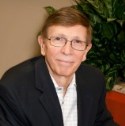
Our interview with David Berry, who became CIO at Daymon Worldwide in February 2014.
How did you initially hear about the CIO opportunity at Daymon Worldwide?
I had been working as an interim CIO for four years and I was quite content with that. After spending most of my career in food and beverage, and CPG (Danone, PepsiCo, Burger King, Häagen-Dazs, Coty), I loved how being an interim CIO exposed me to new industries, including high tech, telecomm, retail, and financial services.
I learned of the interim CIO opportunities all based on networking and word of mouth. The assignment at Polycom in 2010 came through Ramon Baez, who was CIO at Kimberly-Clark at the time (Baez is now the global CIO at HP). Another interim CIO job came through a contact from my Häagen-Dazs days.
I heard about the CIO opportunity at Daymon Worldwide in a similar way. I was on my way to the airport for a trip to London and my phone rang. It was someone from the HR department at Daymon calling about the CIO position there. I later learned that the CEO at Daymon had been given my name by a longstanding contact of mine at Accenture.
What was it about this opportunity that caught your attention?
At the time, Daymon Worldwide was made up of six discreet businesses, and everything was very siloed. The executives had just put together an ambitious plan to integrate the businesses over several years, a program called Vision, and after hearing all about it, I realized that I had a lot of the experience they needed and that I could help them get there.
What did the hiring committee at Daymon Worldwide find most attractive about your professional background?
They needed someone with CIO experience in retail, supply chain, and CPG, and I had all of that thanks in part to my experiences as an interim CIO. And my transformation experience would be critical to the success of Vision 2020.
They also needed a CIO with considerable global experience. I have worked on the ground in 27 countries -- I have lived in France, the Netherlands, Spain and many other countries for years at a time. I have truly been a global CIO for many years, and I think they saw a great deal of value in that.
Besides your resume and background, was there any professional branding that helped position you for the role?
There was a Wall Street Journal article about me and my work as a “Nomad CIO” back in 2012, when I was interim CIO for TOMS Shoes. The writer, Clint Boulton, quoted me explaining how, with each new interim CIO assignment, I was determined to integrate and get immersed in the company and the culture as fast as possible, so that people don’t think of me as an interim. I have also been featured or quoted in quite a few industry magazine articles over the years, many of them on global IT leadership, so for anyone searching the net for more information about the type of IT leader I am, I think the word was out there.
How about the interview process?
Before I went in, I discovered on LinkedIn that I knew someone who actually worked at Daymon, a colleague from years ago. So, I called him up and fired a lot of questions at him about the six business units and how they all fit together. That was valuable intel.
When I interview for a job, I go about it a little differently than most and I will often break with convention. When the discussion turned to my global experience, rather than list the places, dates and projects completed, I told a detailed story about an experience I had working in Japan, about the protocol of meeting people, and building up trust so you can do business with them. I think that volunteering that knowledge and laying out that context gave them a sense of confidence that I had deep global business knowledge.
As a leader today, if you have a hard time telling a story, you are at a disadvantage. They assume you have the technical competencies.
Who do you report to in the organization?
The Chief Customer Officer and CFO, which is one person. Who you report to is what you make of it. I don’t really care about their title as long as I have a conduit to the right people. Whether it works all depends on how you forge that relationship.
How did you prepare to start your new role?
Honestly, I took a trip to Europe with my family—my wife is Dutch—so I could rest up and clear my head. I knew I would need the clarity and extra energy those first few weeks in the job. I didn’t have a first 100 days. When was the last time you had 100 days to do something?
What are the most significant technology changes you have implemented in your first year?
The transformation has been profound. We outsourced our infrastructure and our data center. We moved a 250 server environment to a partner in Michigan. We implemented a new real-time disaster recovery system and outsourced application development to Infosys, an arrangement that was fully live in eight months.
What organizational changes did you implement?
The biggest change is that I introduced a new business engagement function and hired someone at the VP level to head that up.
I found that there was a lot of work I had to do clearing up confusion inside the IT division about what was going on here. There had been two interim CIOs before I came on board. There were a lot of questions about who I was, how long I would be there, and what changes were coming down the pike. It’s not rocket science to work through this sort of thing but it takes focus and patience. I held one-on-one meetings with my entire team, and we had an all-hands meeting on my fourth day where I mostly just encouraged everyone to fire questions at me.
I took on the outsourcing very quickly and aggressively and, most importantly, I empowered my team. Whenever someone asked me what they should do about X, I asked them what they thought we should do about X? At first, they were stunned. They had never been asked. I also explained the politics, and the context. When you explain that, people tend to have a different purpose when they deliver.
I want my team to have a real say in matters and the authority to execute. They should only have to come to me when they need the ground cleared of landmines. Aside from that, they are expected to stand on their own. And they tell me that they can do that because they know I’ve got their backs.
How do you know whether your IT organization is succeeding?
We are succeeding when we are being invited to meetings that are about more than the IT projects we are working on. The high water mark is being invited, requested to be part of the bigger conversation about our business and the strategy for the company in the future.
Members of my team are being invited to executive leadership meetings and, recently, to visit a major client who needed our help with BI. These are the signs of success.
What advice would you offer to those about to embark on a CIO job search?
Be yourself. If you are going to market yourself as the person who can get something done, you first need to be viewed as someone who can be trusted.
About David Berry
 David Berry leads Daymon Worldwide global information technology division and is responsible for providing the vision and leadership in the development and implementation of the company’s information technology initiatives.
David Berry leads Daymon Worldwide global information technology division and is responsible for providing the vision and leadership in the development and implementation of the company’s information technology initiatives.
David’s early corporate career was in IT roles at Pepsi-Cola and The Dannon Company, Diageo plc and Coty Inc. Prior to joining Daymon, David spent a few years working as an interim CIO for companies in several industries, including Polycom (high tech), smartShift (software), TOMS Shoes (apparel) and ascena retail group (retail/apparel). He is also on the board of advisors for several software companies.
About Daymon Worldwide
Daymon Worldwide (www.daymon.com) is a global leader in consumables retailing. Through their renowned industry expertise in private brand building, experiential consumer marketing and innovative retail-driven services, Daymon collaborates with more than 100 major retailers and nearly 6,000 manufacturers in 50 countries. Daymon teams work directly with the world’s leading suppliers and retailers to create and market ownable, differentiated brands in the marketplace that deliver exceptional value, drive consumer loyalty and profitable sales growth, and improve people’s lives. Daymon currently handles more than 1,700 brands and approximately 165,000 individual SKUs globally. Founded in 1970, today Daymon has more than 39,500 highly trained and passionate associates worldwide, with offices located across six continents.

Written by Steve Rovniak
Steve Rovniak served as Executive Director, Marketing and Media at Heller Search Associates from 2012 to 2023.


